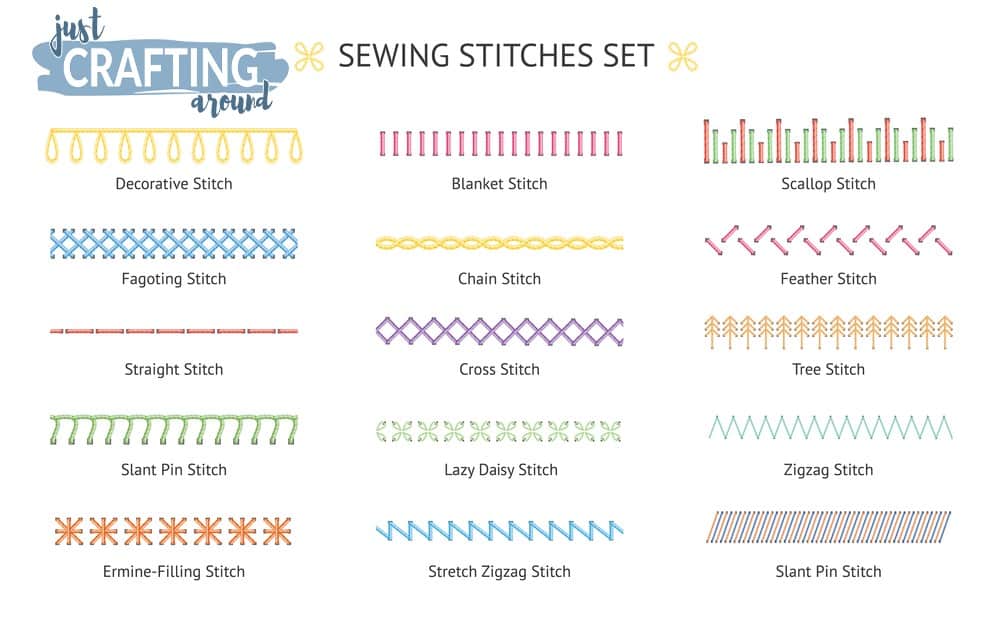
19 Types of Stitches to Sew with Pictures A Comprehensive Guide
For added strength, pull your needle under your knot, leaving a loop, and pull your needle through that loop to make another knot around your original knot. Hem a pair of pants. Hand stitching Basics: learn how to sew 5 common hand stitches: Running stitch, Back stitch, Whipstitch, Blanket Stitch and Ladder stitch.
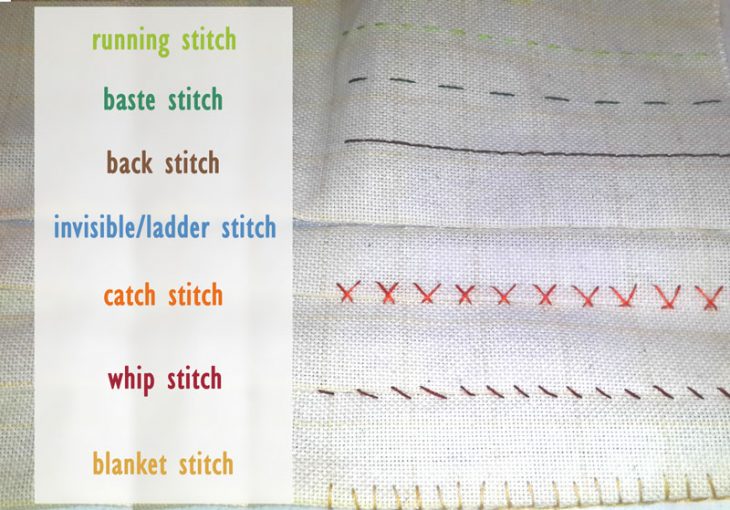
List of sewing stitches Wikipedia
Backstitching was one of the most practical types of hand stitches before sewing machines were available. Take a small stitch from left to right, then insert the needle just beyond where the thread emerges from the previous stitch. The needle should always be inserted at the end of the previous stitch as you continue. Catch stitch (Cross-Stitch)

15 Basic Hand Embroidery Stitches for Absolute Beginners Part 2 YouTube
Stitch Best Use Tailor's Tacks • Mark fabric for construction: darts, folds, match points, etc. Whipstitch • Join one finished edge to another Buttonhole/Blanket • Overcast edges • Make hand-stitched buttonholes • Decorative or functional depending on closeness of stitches French Tack • Secure facings • Join lining and garment.

Basic Hand Embroidery Stitches For Beginners for Simple Embroidery
Start from the back of the fabric and bring the needle at ¼ of an inch from its end. Pull the threat through to the front. Then place the needle at a very small distance from the previous starting point and pull it from the front to the back of your fabric. Place the thread beneath the needle point and then pull it out.

How to Sew Six Basic Hand Stitches
Learn From the Best How to Do a Backstitch How to Do a Blanket Stitch How to Do a Slip Stitch How to Do a Catch Stitch How to Do a Whipstitch How to Do a Chain Stitch 4 Common Machine Sewing Stitches How to Do Standard Stitching How to Do Zigzag Stitch How to Do Buttonholes How to Do Blind Hem Stitch Want to Learn More About Fashion Design?

How to Sew by Hand Seven Basic Stitches
2. Backstitch. Backstitch or back stitch is the strongest hand stitch for seams and only takes a little longer to do than the running stitch. It can also be used for solid borders for embroidery. Backstitch starts in a similar way to the running stitch. Stitch up, down up as shown in steps (1), (2) and (3).

How to Sew by Hand Seven Basic Stitches Hand sewing, Sewing, Stitch
This second tiny stitch (2) is taken about 1/4 in (6mm) to the right of the first stitch (1). Make sure the stitch on the garment is not visible on the right side of the fabric. LEFT: Working from left to right, continue taking tiny stitches between the garment and the hem. Keep stitches about 1/4 in (6 mm) apart.

Embroidery Stitches. Embroidery stitches, Crazy quilt stitches, Stitch
Different Types of Stitches with a Sewing Machine (1) Straight Stitch (2) Zig-Zag (3) Overcast Stitch (4) Buttonhole Stitch (5) Blind Stitch (6) Decorative Stitch 1. Straight Stitch Types (Basic Stitches) We all know straight stitch. Lovely little stitches all in a row. You can vary the stitch length to suit different fabrics or decorative looks.

7 Basic Hand Sewing Stitches Hand stitching techniques, Sewing
Hand stitches have many uses. Before the sewing machine, garment-making was done exclusively by hand. However, in today's home sewing world of sophisticated sewing machines and sergers, few garments are made entirely by hand.But, many home-sewn and custom-made garments continue to have some type of hand stitching used primarily as finishing techniques (hemming, securing fasteners, etc.
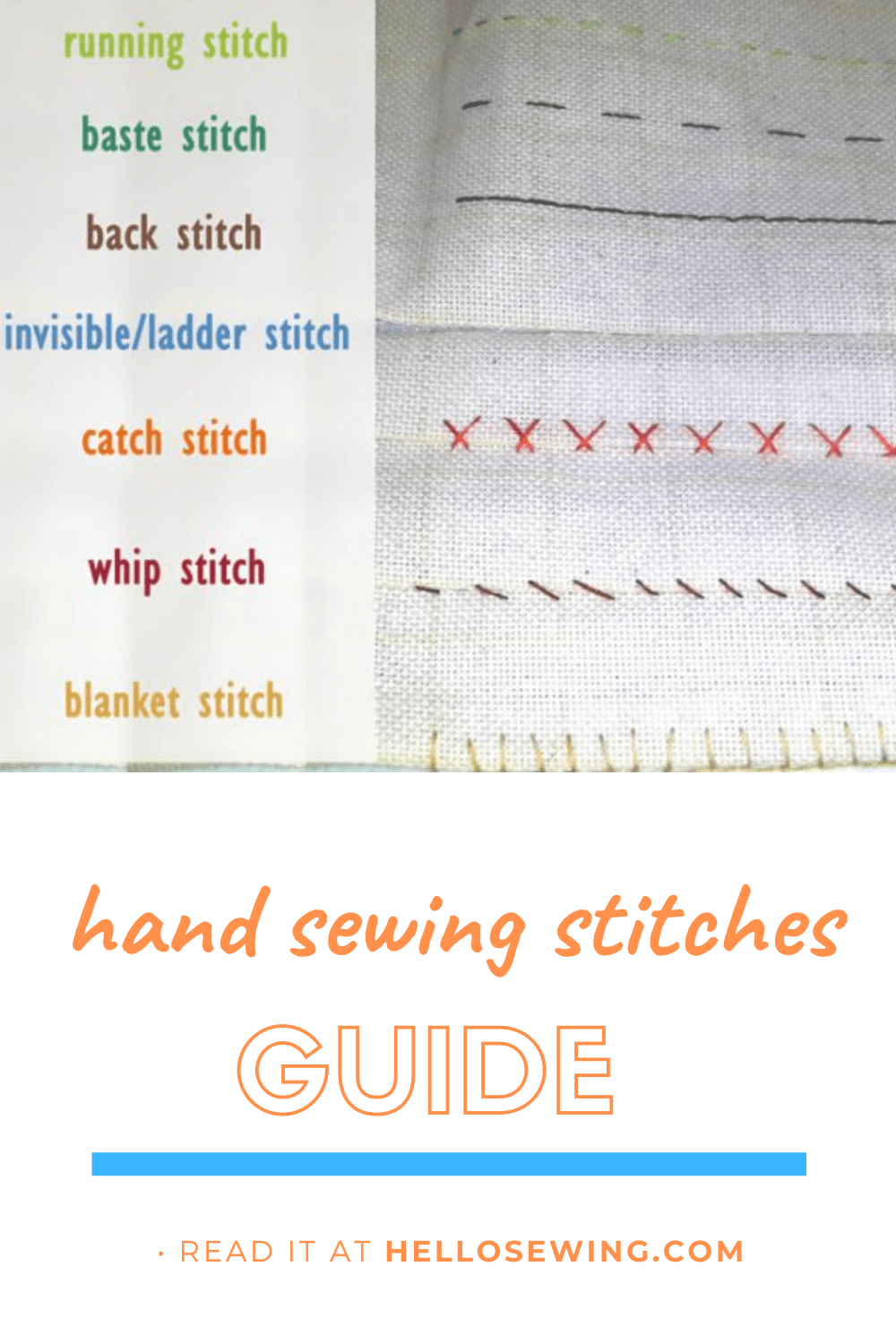
Guide To Basic Hand Sewing Stitches ⋆ Hello Sewing
Home Guides Every Types Of Hand Stitches With Their Pictures And Uses - (Complete Guide) Every Types Of Hand Stitches With Their Pictures And Uses - (Complete Guide) Contents [ show] Types Of Hand Stitches Backstitch This stitch is incredibly strong and secure. The backstitch and the brick stitch are sometimes distinguished.
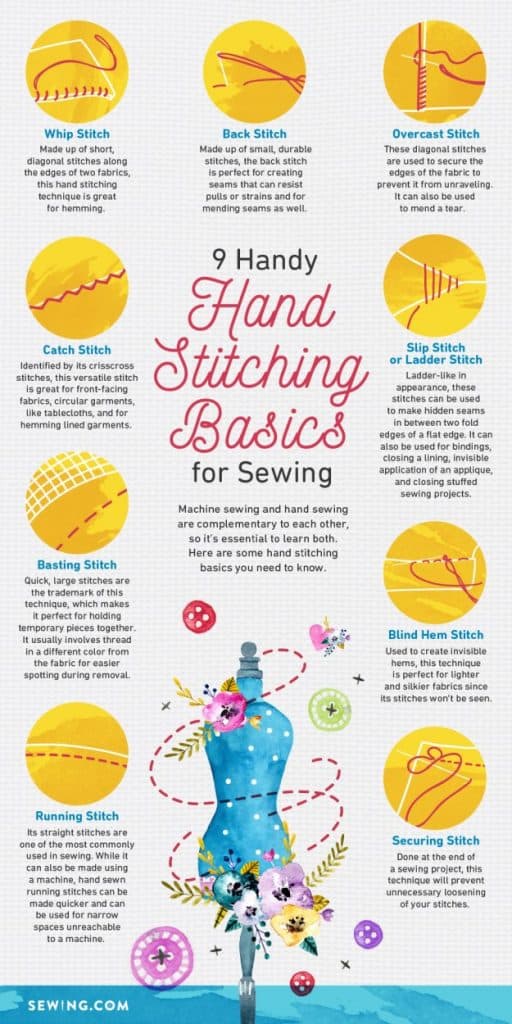
9 Basic Hand Stitching Techniques Every Sewer Should Learn
Below are the best hand stitches. 10. Running Stitch. The running stitch is basically the straight stitch, but done by hand instead of by machine. It runs a straight line through the fabric with the thread. By hand, you'll notice that the running stitch has to have small spaces in between each stitch.
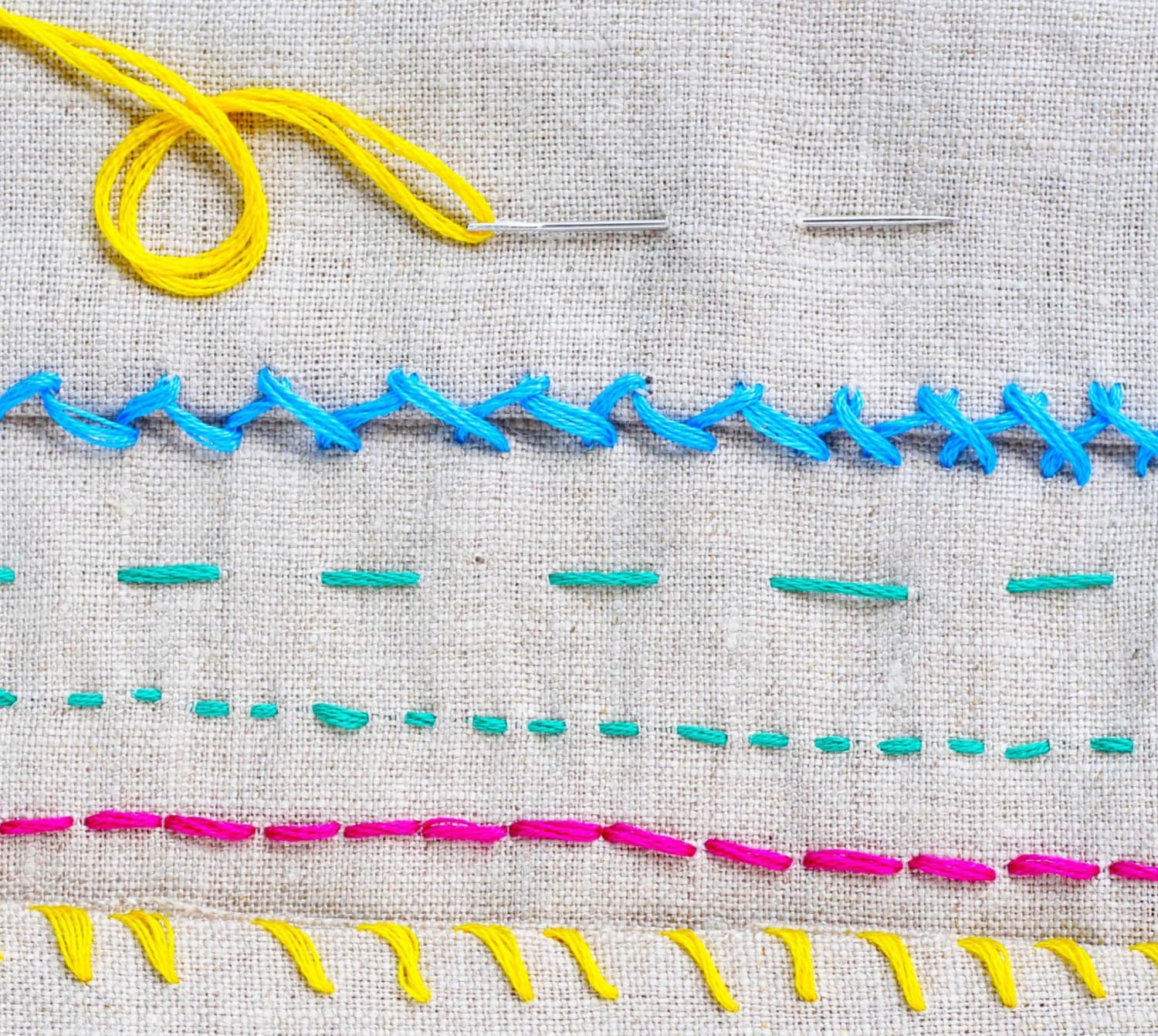
How to Hand Sew 6 Basic Stitch Photo Tutorials Apartment Therapy
The 101 Guide on how and when to use them. Table of contents: Basting Stitch Running Stitch Back Stitch Whip Stitch Overcast Stitch Catch Stitch Blanket Stitch Ladder Stitch Slip Hemming Stitch Blind Hem Stitch Vertical/Couch Stitch Securing Stitch 1. Basting stitch.
:max_bytes(150000):strip_icc()/15Stitches-587161e53df78c17b6e270e8.jpg)
15 Basic Hand Embroidery Stitches You Should Know (2022)
This tutorial provides the photographic step-by-step process to implement a variety of the six most common basic hand stitches.The six stitches we'll be learning today are: running baste.
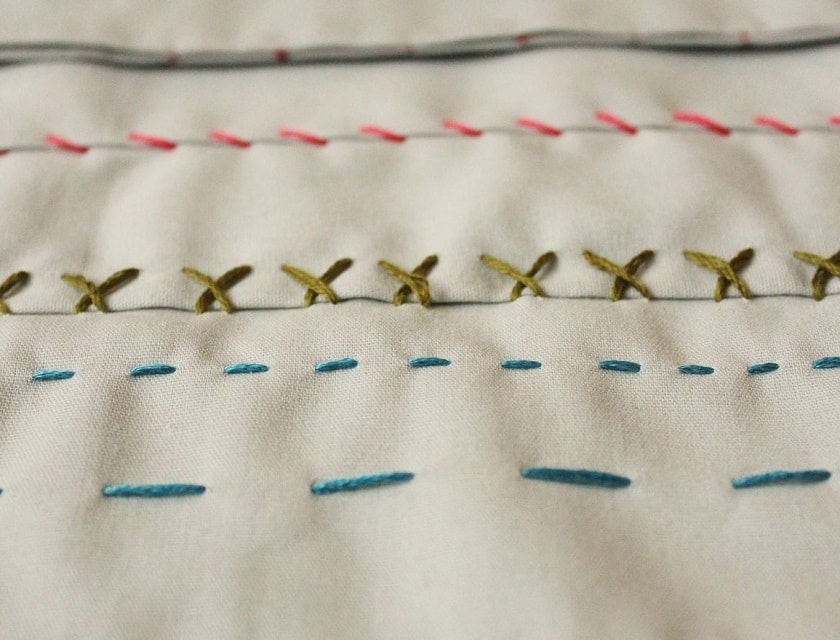
10 Types of Hand Stitches for Beginner Sewists Our Illustrated Guide
Basic Types Of Hand Stitches | Different Types Of Stitches: 1. Straight Stitch / Running Stitch: Uses: Procedure: 2. Basting/Tacking Stitch: Uses: Procedure: 3. Backstitch: Uses: Procedure: 4. Catch stitch (Cross-Stitch): Uses: Procedure: 5. Slip Stitch (Blind stitch): Uses: Procedure: 6. Blanket Stitch (Buttonhole Stitch): Uses: Procedure: 7.
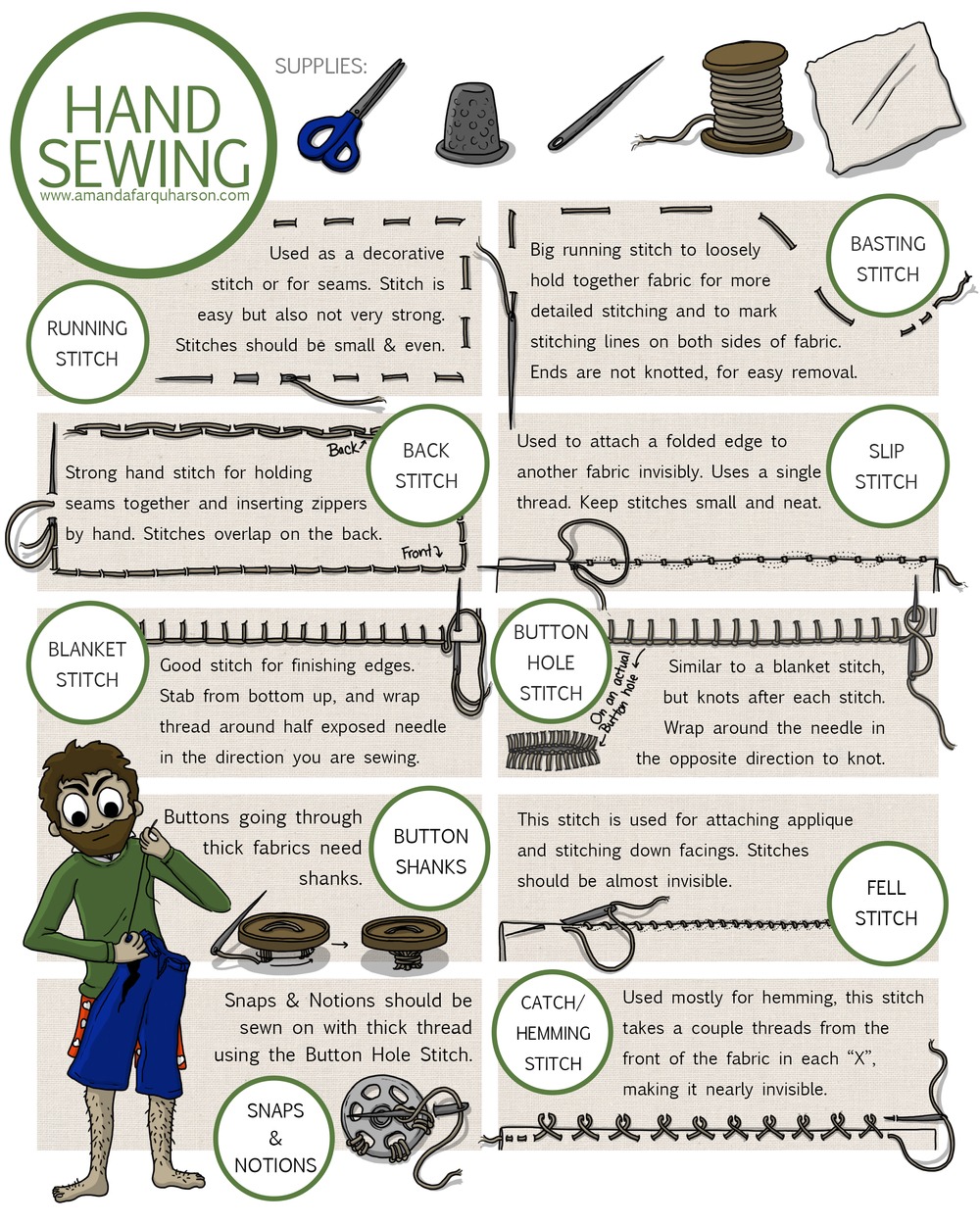
The 8 Most Helpful Hand Sewing Stitches — Amanda Farquharson
Make two or three straight stitches. Make one wide zigzag stitch (cross-stitch) Repeat. 10. The Buttonhole Stitch. While the zigzag stitch is good for stitching buttonholes, most sewing machines have the capability to create buttonholes with a special foot attachment or a pre-programmed buttonhole setting.

Hand Embroidery Stitches 6 EASY hand stitches TREASURIE
4.5K shares It's important to know the different types of hand stitches and how to do them. You should also know how to tie a knot in a thread when you start and how to finish off the thread at the end. Hand sewing is both fun and functional.